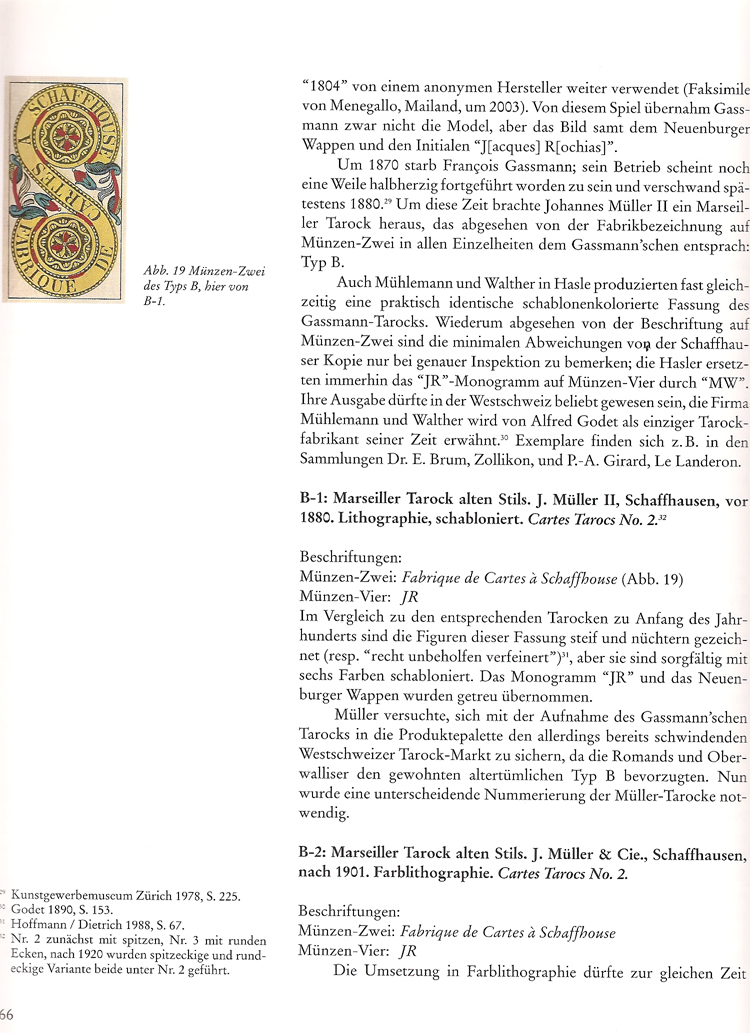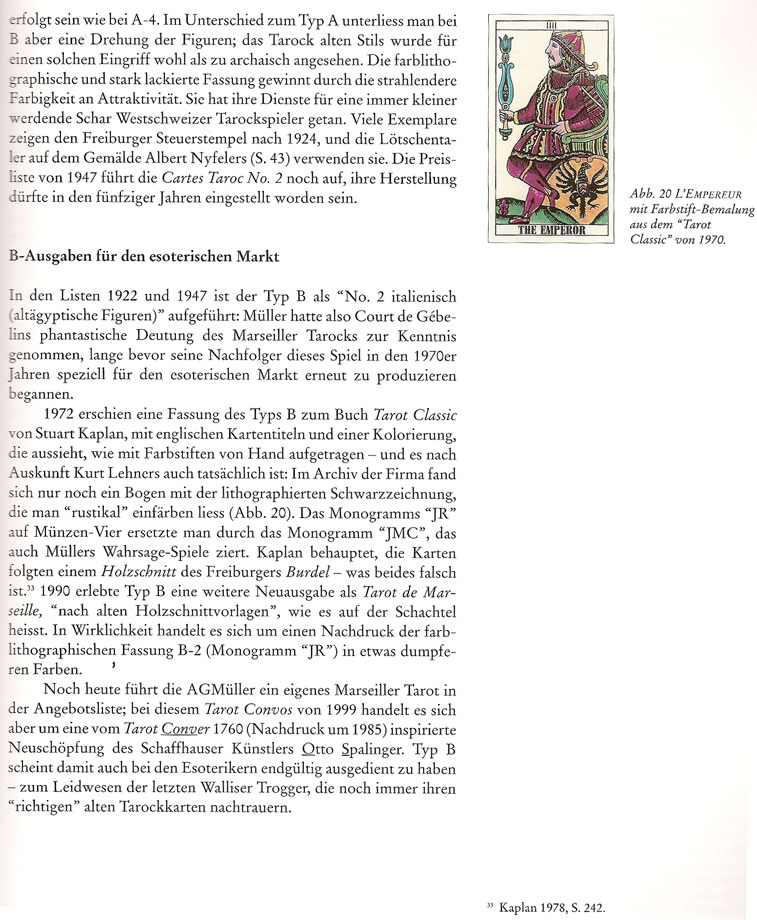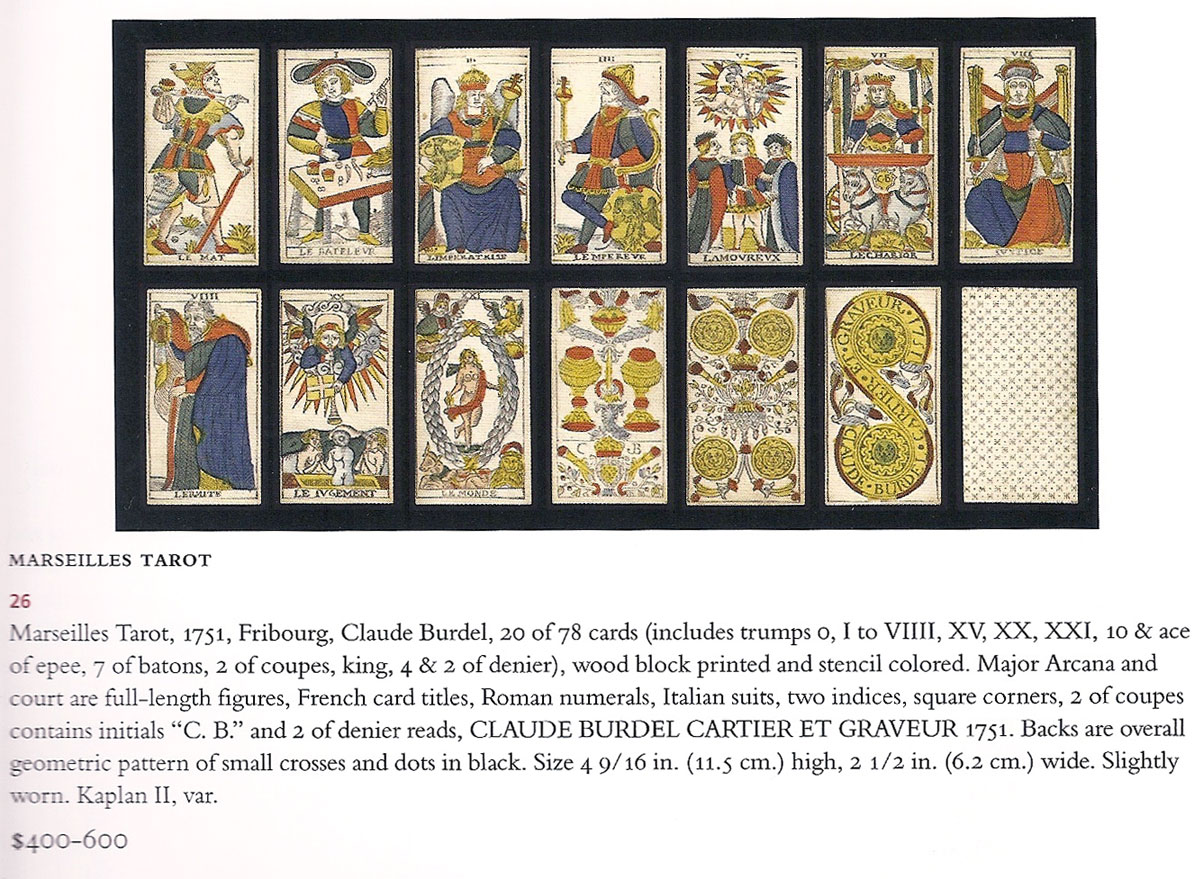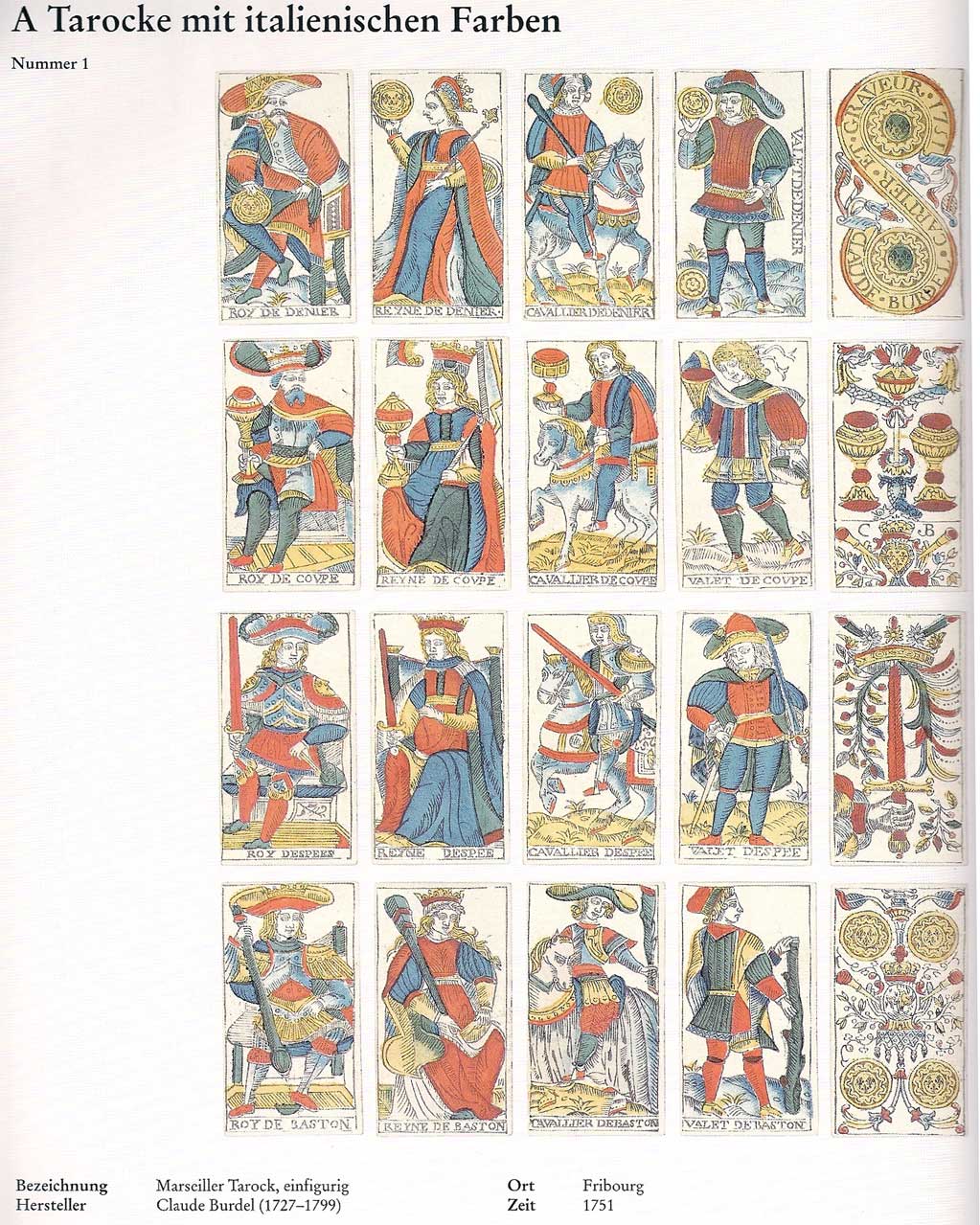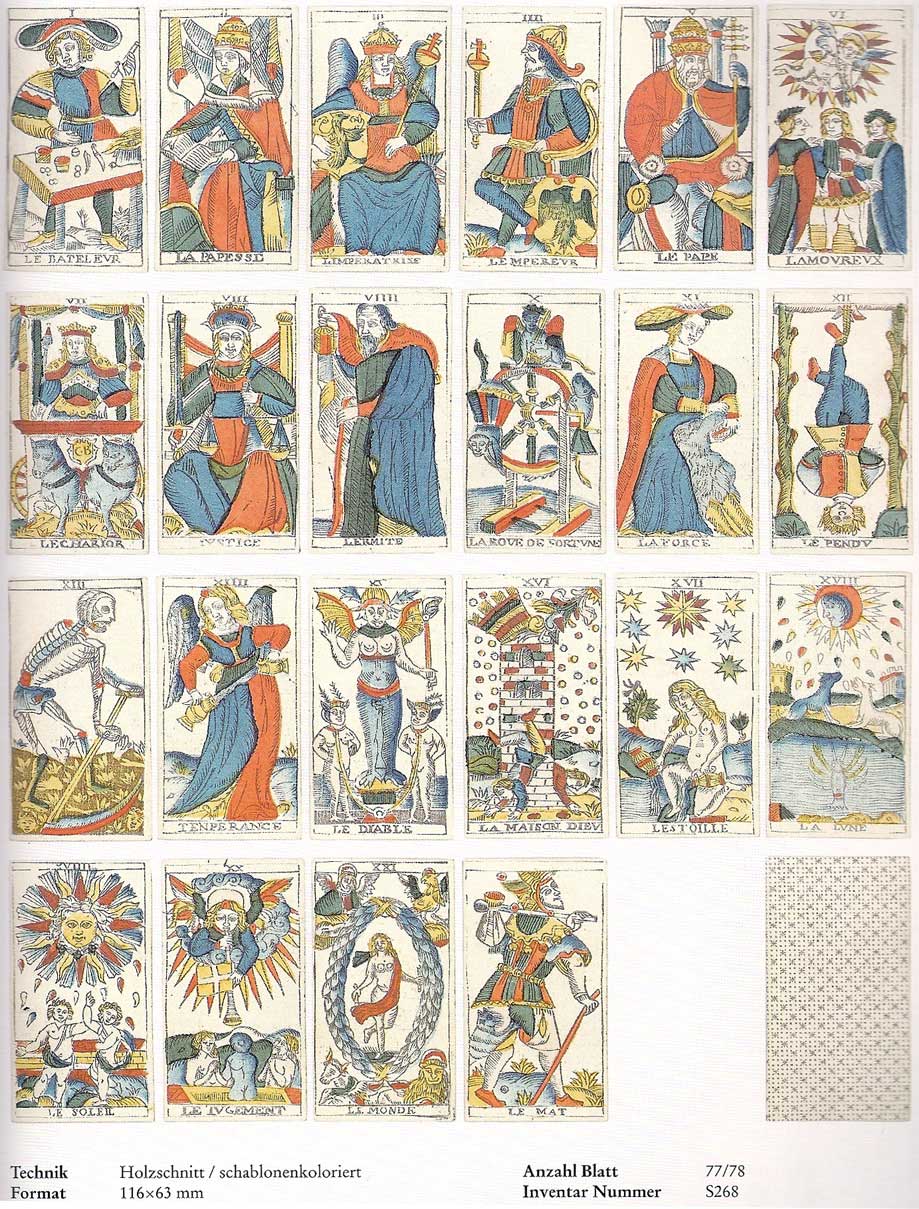Hi, Lee,
Lee said:
I'm wondering what you're looking at when you say the Tarot Classic/Schaffhouse is derived from the Gassmann.
There are two elements to that question. First is the matter of what is meant by "derived from". A better way to put it is that a family resemblance is apparent. This genetic similarity is evidence that somewhere in the past two decks had a common ancestor, and
perhaps one derived from the other, directly or via intervening developments and conflations with other decks. However, "derived from" rarely means directly copied from; when we see something like the Chosson/Conver copying, or the Schaffhausen/Tarot Classic copying, we usually note that one is a copy or reproduction of the other rather than using the vague term "derived from".
Like the genealogy of people, if you go back far enough, everyone is related. However, in the case at hand we have some rather unusual features which are not shared by most TdM decks, much less by most other decks. This is a relatively isolated branch of the Tarot family tree. As for examples of those unusual features, I pointed out two of them in my post, one connecting the Classic with the earlier Burdel tradition and one connecting the Classic with the earlier Gassmann tradition. The manner in which the suit of Swords is depicted is a distinct tradition which includes, among other decks, the Burdel, the Gassmann, and the Schaffhausen/Tarot Classic. OnePotato illustrated this beautifully.
The second unusual feature I pointed out is the design of the Hanged Man. This is from the tradition of Catelin Geoffroy's German-influenced 1557 Tarot deck. This style of Hanged Man comes, as I've argued and illustrated in the Jewish Execution thread, from a different source than the two main Italian Hanged Man styles, (i.e., one with hands tied and facing the viewer, one with money bags in hand). The probability of these features being independently created is zero; these decks are from the same part of Tarot's family tree, or put conversely, they have similarities which distinguish them from the majority of Tarot decks. Look at the lovely Sun, with its coif and garland of flowers. Is this standard in all Tarot decks? Is it the norm in most TdM Tarot decks? Or is it a rather distinctive feature of only a relatively few decks?
Gassmann ----- Schaffhausen ---- Tarot Classic
Ross is emphatically making a point which, AFAIK, no one is disputing, (and which I believe Jean-Michel made in an earlier thread), that the Tarot Classic is a direct copy, a reproduction of the Schaffhausen deck. OnePotato and I are addressing a different question, the original one you asked a couple years ago and which remains the title of this thread: There are connections which
might have some bearing on the Burdel reference, and there are other decks in this family upon which the Schaffhausen/Tarot Classic were dependent.
Best regards,
Michael

